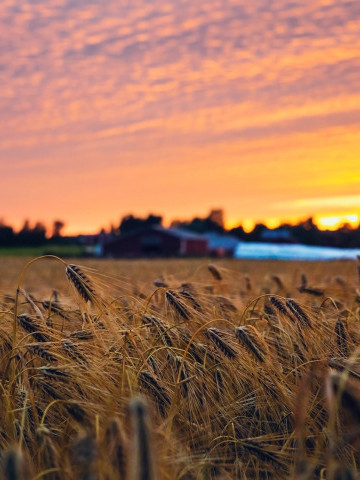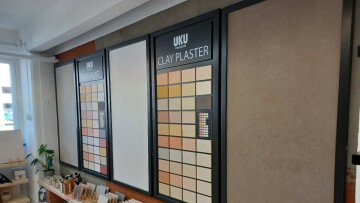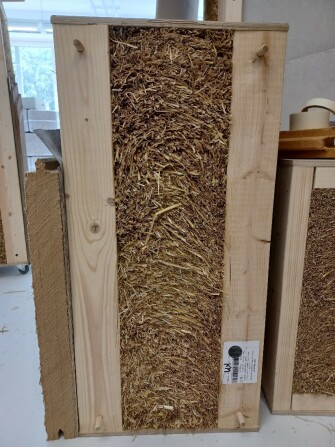
Bioekonomi
I bloggen Bioekonomi får du veta mer om Yrkeshögskolan Novias forsknings-, utvecklings- och innovationsverksamhet inom forskningsområdet systemomställning för att bygga resiliens. Majoriteten av personalen finns huvudsakligen i Raseborg. Här bildar forskare, projektarbetare, lärare, studerande och administrativ personal en dynamisk helhet. På vår blogg kan du läsa om vilka vi är, vad vi gör och om våra resultat. Välkommen!
Vid frågor eller feedback kontakta bloggens administratör Heidi Barman-Geust (Heidi.barman-geust(a)novia.fi)
Vi följer CC BY 4.0 om inget annat nämns.
Systemic Transformation to Build Resilience is one of Novia University of Applied Sciences six' research areas. The activity is mostly located in Raseborg, in southern Finland. As a dynamic unity, our researchers, project workers, teachers, students and administrative personnel produce versatile results in research, development and innovation. We blog about who we are, what we do, what our conclusions are, and how we implement them. Welcome!
If you have questions, please contact Heidi Barman (Heidi.barman-geust(a)novia.fi)
We folllow CC BY 4.0 if nothing else is stated.
With natural building materials we go full circle

When we were invited to visit Werstas Petraamo Ecological Building, we were not sure how to prepare ourselves. Our host Paul Lynch is a sales consultant for EcoCocon straw construction systems and has his own consultation and project management company, SustainaBuild, whose expertise is in the field of sustainable building materials and techniques. We knew there would be natural building materials to look at, but neither of us is an expert on building or renovation. On an afternoon in May, we arrived at a building that used to be a garage in the industrial area of Roihupelto in Helsinki. We walked into this warm and welcoming space, with clay plaster and hemp on the walls, different beautiful natural materials displayed on the tables and floors, and restauration of old doors in progress in another room.
We learned that the showroom is a collaboration between different companies selling products made from natural materials and is shared amongst building and restoration experts (links below). Moreover, it is possible to agree upon visits or hands-on workshops. Paul explained to us very patiently about all the materials, while we touched and admired everything, and visualized those in our own homes. There were lime and clay plasters in many colors to put on walls or floors, coupled with natural paints. We also walked through myriads of options for natural insulation such as hemp, straw, wool, cork, or reed. Outdoors was not left out, with the concept of recycled wood with burnt surface to make it water, insect, mold, and fire resistant without any paint.
There is nothing you can’t do with natural materials, was one of the main messages we took home. Everything, from the foundation to the roof, can be built with them and resist Finnish weather. Natural materials are not that much more expensive, they are certified and modernized. Most of them are long-known and proven materials that are being used either in the old way, when for example restoring old buildings, or are developed into new concepts, like EcoCocon load bearing components of straw you can use to put up a whole modern house in no time. “The straw is so tightly packed in them; it makes the house practically fireproof”, we find out. There are also research-based innovations like “hempcrete” to replace conventional concrete.
But why should we use them though? Even if we work in environmental sciences and are familiar with topical research (see links below), we wanted to go deeper than the standard of “natural is better by definition”. Again, Paul explained: “in your own home, for example, clay plaster regulates moisture better than cement (Emiroğlu et al. 2015), preventing damp and mold and supporting healthier air quality”.
If we want to look at the bigger picture, for a product to be sustainable, you have to think in a circular way: consider the origin of the raw materials and the consequent footprint in terms of extraction, transportation, processing, and use, to finally, where it ends – and hopefully creates a new beginning. For example, the straw for the EcoCocon element comes from the fields of Lithuanian carbon farmers (aiming to store carbon in soil, crop roots, wood and leavers a.k.a. carbon sequestration), and the factory making the building elements is located nearby. In terms of waste, well-built houses last many lifetimes. When the building comes to the end of its life span, the clay can be left there to return to the Earth. The straw can be returned to the carbon farmers who could use it as covering on the fields or to burn it and turn it to biochar, which can then be used in a wide range of construction materials. Other materials would be reused or recycled. Indeed, Paul also showed us solutions where discarded waste was turned into new boards for wall systems.
This entire chain creates new opportunities for Finnish farmers: to sell straw from grain production, produce hemp or flax, collect sheep wool or reed, and even process and use them on the farm. In the context of climate solutions, the rewetting of Finnish peatlands also creates new possibilities to farm natural materials.
Werstas Petraamo had 400 people at their opening this spring. It tells us that there is a lot of interest in ecological building. Farmers, producers, consumers, architects, and construction professionals are all parts of the development in the field. When asked about the biggest challenge in working with natural building material, Paul says it is still the attitude: “but more consumers know that an alternative exists and more and more conventional resellers carry some products, facilitating willingness to make a change”. Education, familiarization, and more trust are needed to steer people in the right direction. It is difficult to get past big companies, but when life cycle analyses of products are presented, you can show the value of ecological products. Therefore, he is confident in what’s to come and envisions steady growth.
Novia has a natural role to play in 1) partnering in projects bringing these matters further, 2) mapping the connections between farms producing raw materials, the processers, retailers and end users and 3) educating students about natural fibers, discussing and addressing prejudices, and making it a less uncommon, appealing and obvious choice. As we have talented students in both bioeconomy and engineering at Campus Raseborg, we have good opportunities to come together for some workshops and other interesting work together.
 Straw construction element. Picture by Aurélie Noel.
Straw construction element. Picture by Aurélie Noel.
This blog post has been written within the project NorNa – Nordic Natural Fibres in Circular Economy. The project is funded by The Swedish Cultural Foundation in Finland.

Links to products
EcoPanel straw boards: https://ecopanel.fi/
Hemp insulation- Etelä-Karjalan Hamppueristeet: https://www.hamppueristeet.fi/
Sheepwool insulation: https://www.isolena.com/en/
UKU clay products: https://uku.eu/en/clay-products/
Savikrohv clay plaster from Estonia: https://uninaks.ee/en/toode/savikrohv/
Rouhis clay and lime plastering: https://www.rouhis.fi/
Amorim Cork insulation from Portugal: https://www.amorimcorkinsulation.com/en/
Auro paints: https://www.auropaint.co.uk/
VestaEco insulation board from Poland: https://www.vestaeco.com/
Hiil recycled wood with burnt surface: https://hiil.fi/
Green Inner Wall from Recoma wood tube and Ekolution hemp insulation: https://www.recoma.com/wall-systems
Natural paints – Suomen luonnonmaalit: https://suomenluonnonmaalit.fi/
Example of natural material construction: https://collaboratorio.fi/
Links to experts
Petra Wallace restauration and painting: https://www.petrawallace.fi/
Metsä-Tappura carpenter: https://www.metsa-tappura.fi/
Finnish association of architects, sustainable architecture: https://www.safa.fi/osasto/eko-safa/
Links to research and projects
Recent report on potential of organic building material: Westermarck, M. , & Vinha, J. (2023). A preliminary study of organic building products and their application potential . (University of Tampere. Construction technology. Research report; No. 5). University of Tampere. http://www.urn.fi/URN:ISBN:978-952-03-2835-1
Current Interreg project about bio-based materials and energy retrofit: https://circularreno.nweurope.eu/
The Baltic Reed project: https://www.raceforthebaltic.com/balticreed
Bioregion Norway: https://www.bioregion.institute/ and the DREIS project: https://www.bioregion.institute/latest/dreis
Emiroğlu et al. 2015: https://doi.org/10.1016/j.clay.2015.08.005
BioCarbonValue project: https://lab.fi/en/project/biocarbonvalue-high-value-carbons-agricultural-biomass
The blogpost has been reviewed by Novia's editorial board and accepted for publication on 31.5.2024.![]()
Bioekonomi
Blogginlägg som är granskat av Novias redaktionsråd är utmärkta med nyckelordet "Granskat inlägg".
Vi följer CC-BY 4.0 om inget annat nämns.
Ansvarsfriskrivning: Författaren/författarna ansvarar för för fakta, möjlig utebliven information och innehållets korrekthet i bloggen. Texterna har genomgått en granskning, men de åsikter som uttrycks är författarens egna och återspeglar inte nödvändigtvis Yrkeshögskolan Novias ståndpunkter.
Disclaimer: The author(s) are responsible for the facts, any possible omissions, and the accuracy of the content in the blog.The texts have undergone a review, however, the opinions expressed are those of the author and do not necessarily reflect the views of Novia University of Applied Sciences.